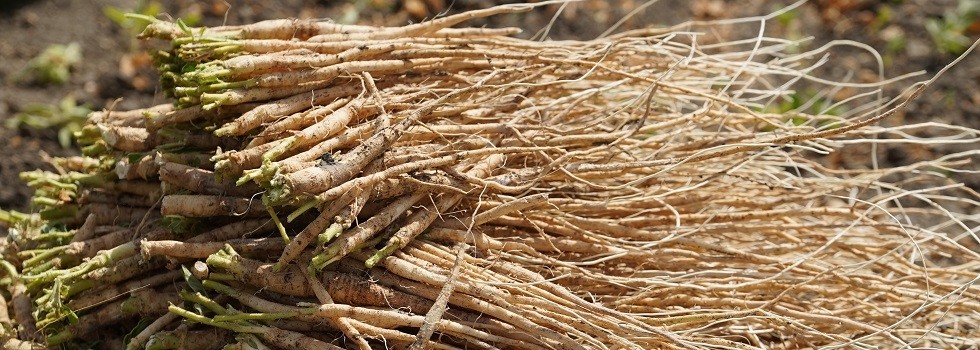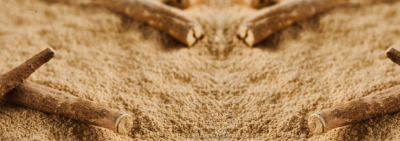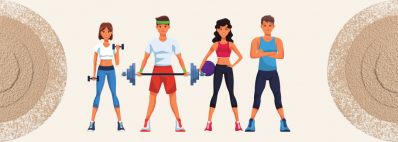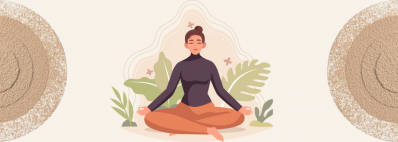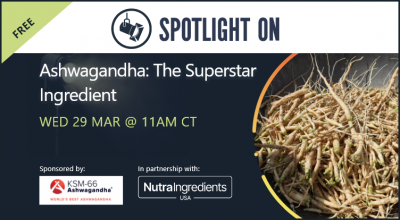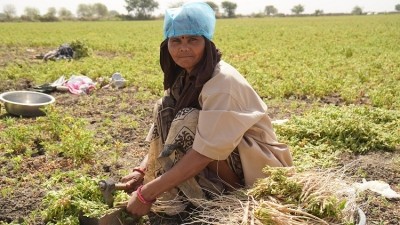Promotional Features
Roots for health, leaves for compost
The root of ashwagandha Withania somnifera has been a staple botanical of Ayurveda for thousands of years, earning the name 'the king of herbs'.
In the last decade ashwagandha has risen in popularity in the natural products industry and the general public due to its broad and significant benefits for health. Estimates indicate that the ashwagandha market is expected to reach USD 1.14 billion by 2028 growing at a growth rate of 6.40%.1
As ashwagandha has risen in popularity some ashwagandha providers have attempted to carve out unique market positions by incorporating aerial parts, namely leaves, in their products to offset the amount of root material traditionally used. KSM-66 believes this is an error.
Government of India Advisory
In response to the new use of aerial parts of ashwagandha for internal purposes India’s The Ministry of Ayush has issued an advisory2 against the use of ashwagandha leaves, specifically stating:
“No substantial evidence and literature is available to endorse the efficacy of crude drug/extract of Withania somnifera leaves. Considering this, it would not be appropriate to consider the Withania somnifera leaves as ASU (Ayurveda, Siddha, Unani) medicine at this stage. Extensive studies are required to establish the safety and efficacy of leaves of Withania somnifera for different indications. Till then, the usage of leaves may not be considered for therapeutic purpose in ASU systems.”
Additional standards on the use of ashwagandha root alone have been published by the Ayurvedic Pharmacopoeia of India, Siddha Pharmacopoeia of India, Unani Pharmacopoeia of India, American Herbal Pharmacopoeia, Indian Pharmacopoeia, and British Pharmacopoeia as well as the World Health Organization Monographs and United States Pharmacopeia.
This begs the question: why are some suppliers adding leaf material to their extracts?
Ashwagandha leaves are cheap
Ashwagandha leaves are 100 times cheaper than roots. Leaves are sold at $0.03/kg, while ashwagandha roots are sold between $3-4/kg.
By incorporating more leaf material into ashwagandha-inclusive formulations, and simultaneously reducing the amount of root extract (which is far more expensive), ashwagandha extract suppliers and supplement companies can substantially increase their profit margin.
Furthermore, increased usage of leaf material also decreases the profits of the hard-working farmers and robs ashwagandha fields of the much-needed compost for the next growing season.
This is one of the many reasons why KSM-66 Ashwagandha uses only the root in its extract.
Ashwagandha leaves serve a valuable purpose: sustainability
While the aerial parts of ashwagandha are not recommended for consumption, they serve an essential role in the sustainability and natural life cycle of ashwagandha. Farmers allow the leaves to dry on the growing fields and harvest the seeds for the next year’s growing season. Dry leaves (as well as stems) become compost for the next season’s ashwagandha crop, helping replenish the organic content of soil.
In other words, roots are for health and the leaves are for compost.
False claims and misinformation
Some makers who include leaf material in their extracts have been promoting misinformation regarding growing practices and usage of ashwagandha, including:
- Ashwagandha whole plant extracts are more cost-effective (“for consumers”) compared to root-only, creating the same (or better) health benefits at a lower price. This is a guess. We have no idea what is the effect of long-term use of root and leaf extract, or if that combination provides similar adaptogenic value as pure root.
- Manufacturing root-only extracts sacrifices the rest of the plant, which is generally burnt, contributing to pollution around big cities in India, such as Delhi. In fact no farmer would burn the leaves of the ashwagandha plant, as ashwagandha leaves are key to maintaining soil fertility. Delhi’s very well known air pollution is caused by high-emission industries and diesel-powered vehicles.
Traditional use of ashwagandha root
Stress has always been part of the human condition, whether it be physical, psychological, or emotional, and ashwagandha has been a staple botanical for stress relief for nearly 3,000 years.3
Ayurvedic vaidyas (aka physicians), sages, and rishis all have confidently recommended and dispensed only ashwagandha roots and its preparations for internal use. Ashwagandha’s very name has an allegiance to the “root” part of the plant. “Ashva” stems from the Sanskrit word which means “horse,” while “gandha” means “smell.” Together, “ashwagandha” indicates that the odor of the “root” is reminiscent of the scent of a horse, which is energizing. Additionally, its species name, “somnifera,” is derived from the Latin root word, “somnus,” which means “to sleep”.5 Put together, ashwagandha promotes both energy and sleep, when balanced, creating the foundation of robust health, vigor, and wellness.
Beyond its energy, sleep, and stress-relief benefits, ashwagandha root has also been used to promote strength, improve libido and vitality, and treat upper respiratory conditions and arthritis. South African cultures have also used ashwagandha root to support uterine health for women who tended to miscarry as well as for full expulsion of afterbirth.
In the thousands of years of traditional usage, there is no widespread mention, instruction, or practice with the ashwagandha leaf. In fact, an ancient text from Ayurvedic scripture clearly defines the use of the ashwagandha leaf, stating: "Leaf of the ashwagandha herb is used for topical applications. Usage of this leaf is limited to the external applications”.5
Modern independent research into ashwagandha
Hundreds of studies have been conducted on ashwagandha over the past 25 years and, overwhelmingly, these trials have utilized the roots of the plant. To further clarify:
- In the Clinical Trials Registry of India, out of 126 trials registered on ashwagandha, 125 are on root and root-based formulations, with only 1 on leaf.6
- In the Iranian Clinical Trials Registry, out of the four clinical trials that have been registered on ashwagandha, all are on ashwagandha roots and root extracts.7
- All seven clinical trials registered on Ashwagandha in Australian and New Zealand Clinical Trials Registry are on the root.8
- In the United States National Institute of Health (NIH) clinical trials.gov registry, all 5 clinical trials on ashwagandha have been registered on ashwagandha root extract/powder.9
Conclusion
Modern research continues to affirm what traditional practices have known for thousands of years -- ashwagandha is one of nature’s true blessings. It contains an array of beneficial bioactive compounds that offer a wide range of benefits that can improve an individual’s overall quality of life.
As a result, the age-old tonic is rapidly becoming one of the world’s most in-demand and valuable medicinal plants. To maintain the integrity of ashwagandha’s effects, extracts should not be adulterated with leaves. Thousands of years of practice and numerous clinical trials have shown that the roots are responsible for the therapeutic effects of ashwagandha, not the leaves. Incorporating leaf material (and other aerial parts) undermines the efficacy of ashwagandha, devalues the hard-working ashwagandha farmers, and produces a product with no history of safe and effective use.
The leaves serve an essential role as compost for cultivating ashwagandha, but they are under-researched for health, safety, and efficacy.
This is why KSM-66 Ashwagandha® contains only root extract.
References
1. OpenPR. Ashwagandha Market Has Huge Potential for Growth by 2028.
2. Ministry of Ayush, Government of India. (2021). Advisory on Ashwagandha.
3. Charak Samhita 6000BC. (1949). Charaka translation into English: Translator: Shree Gulabkunverba Ayurvedic Society. Jamnagar, India.
4. American Herbal Pharmacopoeia™. (2000). Ashwagandha Root (Withania somnifera) Analytical, Quality Control, and Therapeutic Monograph. American Herbal Pharmacopoeia™ and Therapeutic Compendium.
5. Natural Health Products Directorate (NHPD). (2007). Monograph: Ashwagandha. Ottawa, Ontario: NHPD.
6. Advanced Search in Clinical Trials Registry – India. Clinical Trials Registry – India.
7. Iranian Clinical Trials Registry.
8. Australian New Zealand Clinical Trials Registry (ANZCTR).
9. ClinicalTrials.gov.
